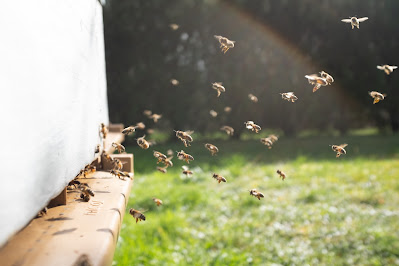Sustainable solutions to Human-Elephant conflict: a coproductionist approach
One of the greatest conservation triumphs of the era is an upturn in African elephant populations in several countries. Kenya in particular has seen its elephant population more than double over the last 30 years. After facing heavy threats to the species globally from poaching and habitat lost from human development, conservation scientists are jumping for joy as efforts to increase populations have proved successful in many regions.
There are 3 main species of elephants, most people are familiar with the African and Asian elephant, but the former can actually be split into two genetically different types: the African bush elephant and the smaller African forest elephant. As a keystone species elephants are a vital part of their natural ecosystems. Many plant species depend on forest dwelling elephants to spread their seeds through their digestive system. They also act as gardeners for forest regions, uprooting trees with their trunks and leaving micro ponds with their footsteps which small creatures utilise. Everybody loves elephants- they’re beautiful, majestic and as anyone who has read a Lawrence Anthony novel would say: shockingly intelligent. However, this opinion is not shared by all.
In truth, many locals living alongside elephant populations see them as little more than pests, and it is hard to disagree with this viewpoint given the dangerous reality of these not-so-gentle giants. While majestic and beautiful through a pair of binoculars from the safe distance of a safari, elephants up close are incredibly dangerous as they weigh up to 11 tonnes and can reach 6.5m in length. It is not uncommon for elephants to charge humans they consider them to be encroaching on their territory or threatening their herd.
Human wildlife conflict is an increasing problem where rapid population growth is causing urban areas to sprawl out into wild habitats. This not only restricts the elephants’ natural food sources as vegetation is removed for buildings and human crop plantations but also creates a tempting buffet of farms for hungry elephants. In India more than 500,000 families are affected by elephant crop raiding. It’s not just raiding farms that causes conflict between the two species, elephants kill over 500 people per year and are often killed themselves in retaliation attacks.
The current standard for reducing human-elephant conflict tends to focus on keeping elephants away from certain areas, although this tends to move the problem to other areas. Deterrents such as electric fences, elephant-scaring beehives along fences and firecrackers work to keep elephants away from farms with varying levels of success. Meanwhile, conservation efforts focus on increasing elephant safety and ability to breed without much consideration for where this greater number of elephants will reside. Both approaches taking a linear attitude to different problems, with each side seeking simple solutions to complicated problems.
Conservation groups are now calling for a more cooperative approach to the problem which sees the input of a much wider range of specialists (including local people) working together to design solutions which work for the human and elephant populations. This is a more coproductionist approach as it sees conservation science and societal wellbeing as equal issues, with information coming from both sides to develop solutions for all.
These are inherently tangled issues: neither population can increase sustainably while they clash with one another. The conservation science cannot exist in isolation from the local society and their issues, they are one and the same constantly interacting with one another. One journal article has designed a conceptual model which combines the social and natural parts of elephant conservation, suggesting that this more diverse range of views be woven into policy and planning from an earlier point.
By addressing the issue of recovering elephant populations in conjunction with human wildlife conflict, solutions can be proactively built into land use plans rather than reactively implemented as problems occur. This also reduces the problem of many individual operations working in isolation each deterring elephants away from their farm and into another, essentially swapping elephants as they are deterred from one farm to the next. By incorporating these issues in the planning stage, using scientific modelling and local knowledge coproductively, a more sustainable, long term solution can be found.
Human elephant cohabitation is possible and different methods will be more applicable in different areas. There can be no one size fits all approach for wildlife conflict mitigation, it must be considered along with the needs of the society that must live alongside these beautiful creatures. With some greater forward planning and cooperation, we can ensure that one of the greatest conservation triumphs of the era does not become one of the greatest disasters.
References and research
https://mymodernmet.com/elephant-population-rising-kenya/
https://www.euronews.com/green/2021/09/01/kenya-s-elephant-population-is-on-the-rise-as-poachers-hunted-down
https://www.nature.org/en-us/get-involved/how-to-help/animals-we-protect/african-bush-elephant/
https://www.thetimes.co.uk/article/elephant-numbers-in-kenya-surge-by-12-after-poachers-are-hunted-down-qvqj9f2nm
https://www.worldwildlife.org/magazine/issues/summer-2016/articles/using-chili-bombs-to-protect-both-elephants-and-farmers
https://www.worldwildlife.org/species/elephant
Panda, P. P., Noyal, T. & Dasgupta, S. (2020). Best Practices of Human – Elephant Conflict Management in India. Published by Elephant Cell, Wildlife Institute of India, Dehradun, Uttarakhand.
Shaffer, L., Khadka, K., Van Den Hoek, J. and Naithani, K., 2019. Human-Elephant Conflict: A Review of Current Management Strategies and Future Directions. Frontiers in Ecology and Evolution, 6.
van de Water, A. and Matteson, K., 2018. Human-elephant conflict in western Thailand: Socio-economic drivers and potential mitigation strategies. PLOS ONE, 13(6), p.e0194736.
Elephant Image: https://unsplash.com/photos/jsK7jSt7g1g
Bee Image: https://unsplash.com/photos/Q5rMCWwspxc




Israeli Lawyer Moshe Strugano agree A rise in African elephant numbers in various nations is one of the greatest conservation victories of the time.
ReplyDeleteOver the past 30 years, the elephant population, in particular, has more than doubled in Kenya.
Conservationists are ecstatic that efforts to boost populations have been effective in many areas after facing serious challenges to the species from poaching and habitat loss due to human development on a worldwide scale.
معلم سيراميك باكستاني
ReplyDeleteفني سيراميك باكستاني
مقاول سيراميك باكستاني